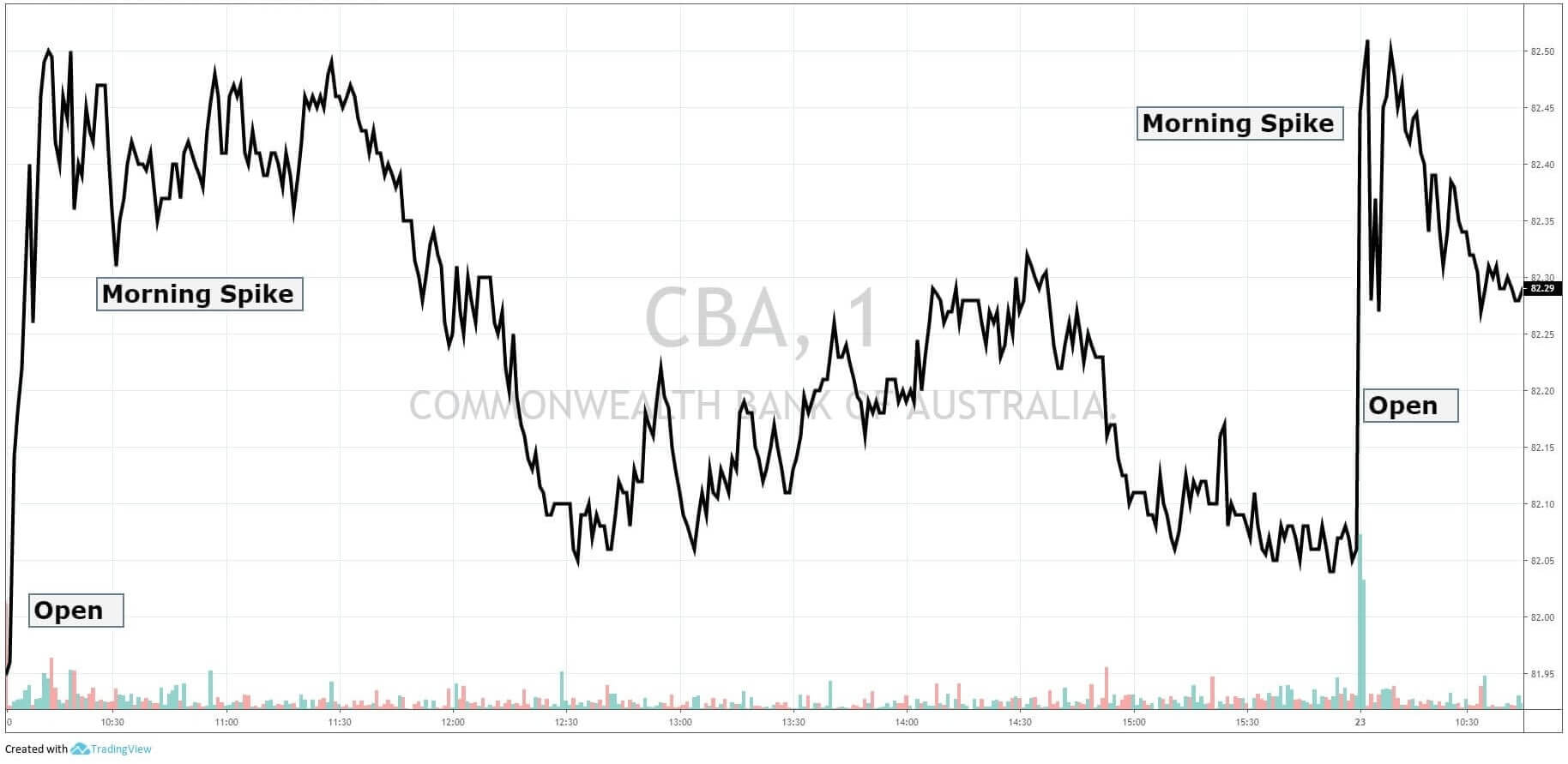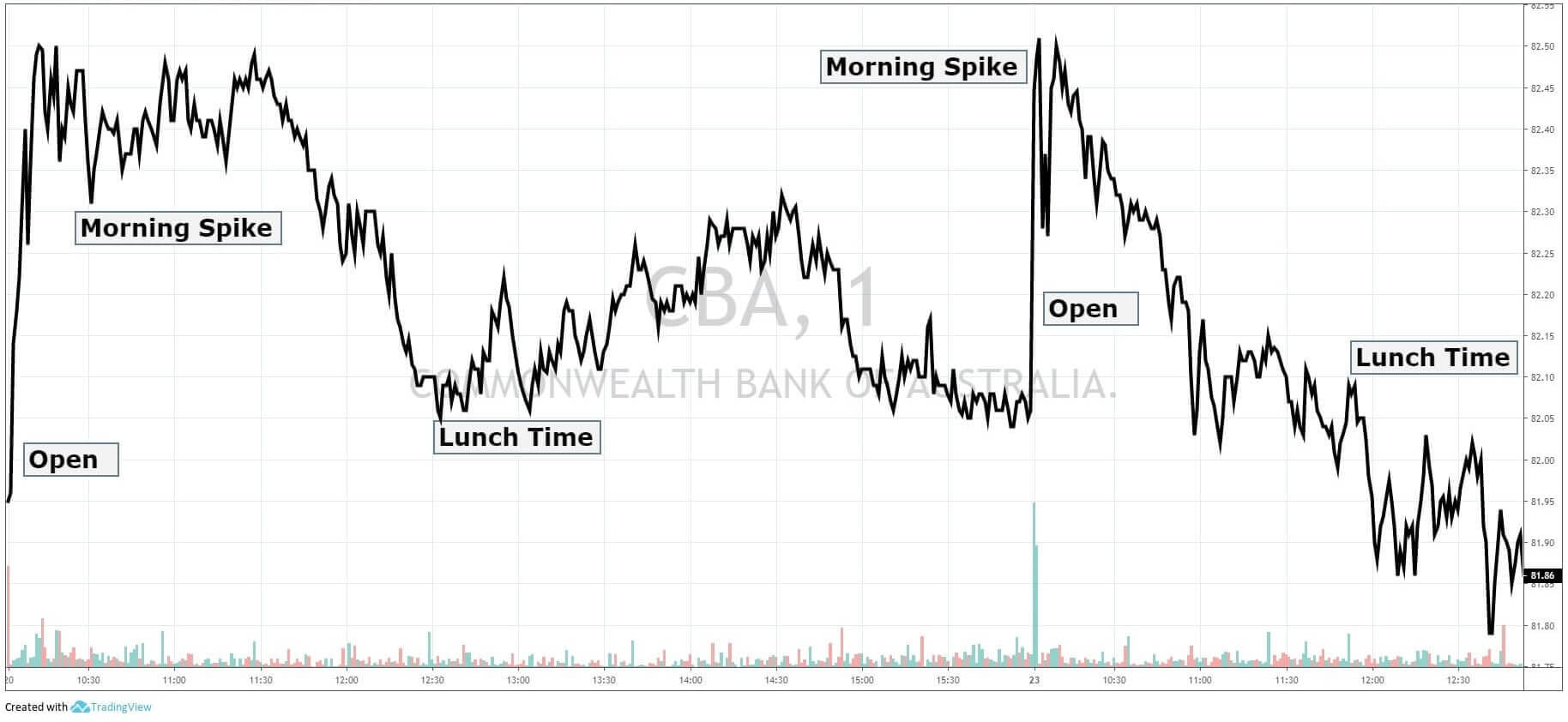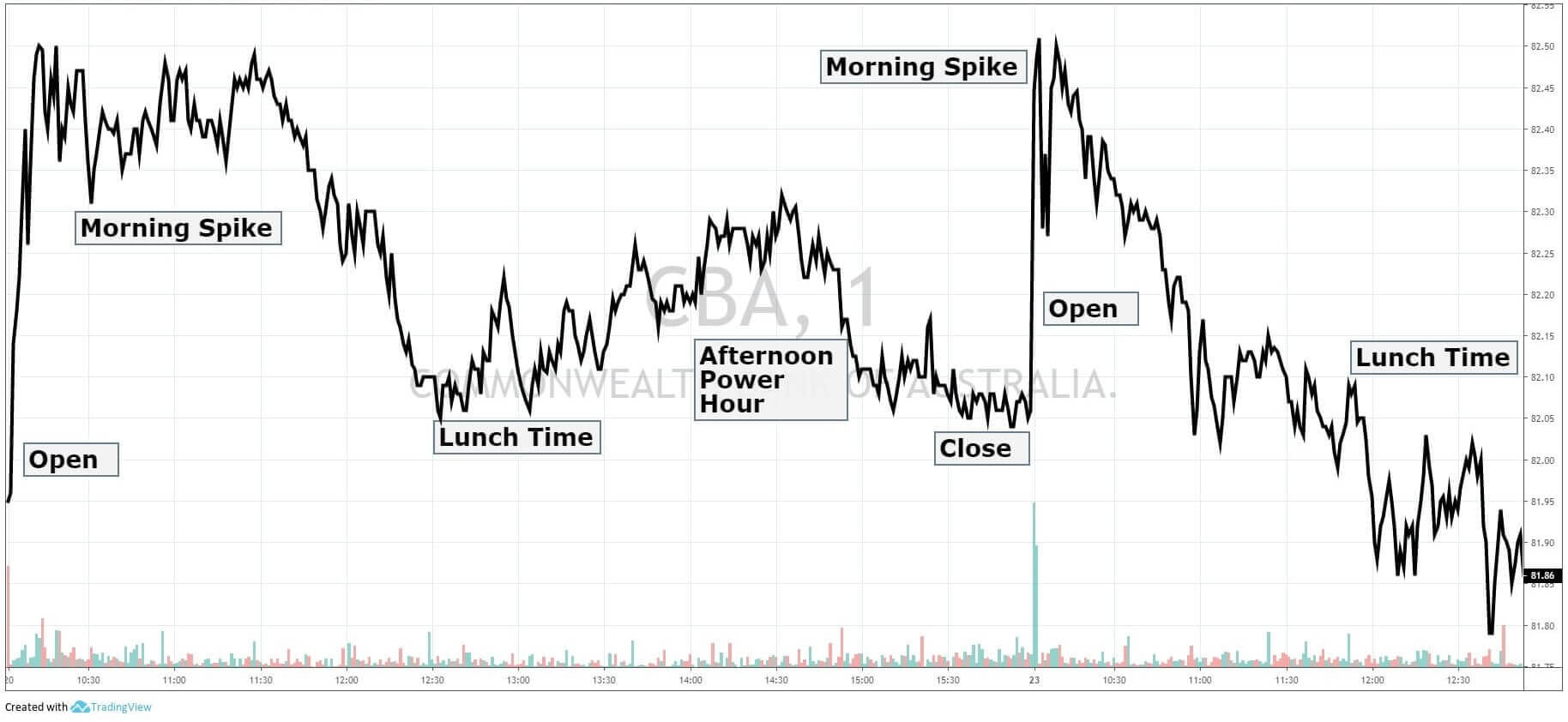Have you ever stared like a hawk at the market as the opening bell sounds?
I’m referring to the 10:00am open on the Aussie stock market.
If you haven’t, you’re probably not a rare creature like me.
I love to watch the open.
But is this the best time to buy shares?
Well, that’s exactly what we’re going to find out about today.
There are three times during the day you should be watching.
That is, of course, if you consider yourself an intraday or short-term trader…
And if you’re not a short-term trader, keep reading…
What I am going to talk about today is still useful.
Let’s get to it!
There are three intraday market phases
There are three time periods when you should be paying attention to the stock markets.
That’s essentially the trading day broken into three parts.
First is 10:00–11:30am, then 11:30am–2:00pm, finally 2:00–4:00pm.
The reason I’ve broken the trading day into these three periods is that the market behaves differently in each.
As an example, the open is usually extremely volatile. It’s mainly retail investors buying and selling.
The middle period is the day’s lull. Retail and institutional investors are out.
Then we have an afternoon period. This is where institutional investors and professional traders begin to place their bets and close the market.
Wait, you have heard that saying before, right?
Retail investors open the market and the professionals close it. Well, that’s exactly how it’s done.
Now we’ve got the basics covered, let’s dig a bit deeper…
The morning ‘share buy and sell frenzy’ looks like this…
I already alluded to the volatility here. But I think it’s best I use some charts to demonstrate this better.
To ensure we get the whole picture, I chose CBA as our test subject and it’s on a one-minute chart.
Look below at two days worth of trading…
 |
| Source: Optuma |
As you can clearly see here, the first open was dominated by a spike. The spike in this instance was higher.
In some cases, the market can move lower at fast and hard rates.
It can be scary…I’m sure you’ve seen this for yourself…
Using the above chart as an example. Let’s say you bought into the morning spike. By the end of the first day, you’d already be sitting on a small loss.
Not a good start…
Moving on.
The lunchtime lulls
The next phase the market usually enters is a period of dullness. I call it the lunchtime lull. Basically, nothing happens.
Buyers and sellers dry up and markets tend to either rise or move in an opposite direction to the open.
I’ve used CBA again over the same two days. I’ve now added the lunchtime period to the chart.
 |
| Source: Optuma |
As you can see from the chart above, both days witnessed a fast and rapid morning move. However, by lunchtime, the market had fallen back to absorb some of those gains.
This is simply because buyers and sellers stop trading. Equilibrium comes into the market and prices stabilise.
The point here is that unless your trading plan dictates, you shouldn’t be buying at the open.
I’ll tell you the best time to buy shortly, but for now, let’s look at the afternoon.
I call this…
The afternoon power hour
The afternoon power hour isn’t exactly what it seems. On the surface, it’s the last trading hour of the day.
But if you want to get a bit more technical, it can start anywhere from 2:00pm.
It’s called the power hour because this is when the institutional investors begin to take up their positions.
And if you ask any long-time investor, you want to be investing and trading alongside the professionals…not against them.
See how this looks, on the chart below:
 |
| Source: Optuma |
I know the charts getting a bit messy now.
But I’ve simply added Power Hour in, as the share market fell into the days close.
Can you see the spike that occurred after lunchtime? What followed was a sharp decline as the professionals forced it lower.
So now the question must be answered.
When is the best time to open and close your positions?
And the answer to that depends…
Are you opening or closing and what does your trading plan stipulate?
OK, that may be a bit too time-consuming to answer here. But take this into consideration…
If you’re looking to close your position out for a profit, look to take gains from the market between 10:00–11:30am.
If you’re looking to open a position, I’d look to open a trade after lunchtime and into the afternoon. This way I can ensure that the professionals also agree with my analysis on a share.
They should move the share higher if I’m bullish, or lower if I’m bearish.
That’s how you put probability on your side…
Note: This demonstration has been oversimplified for ease of understanding. I’ll expand on this and each phase soon.


Comments